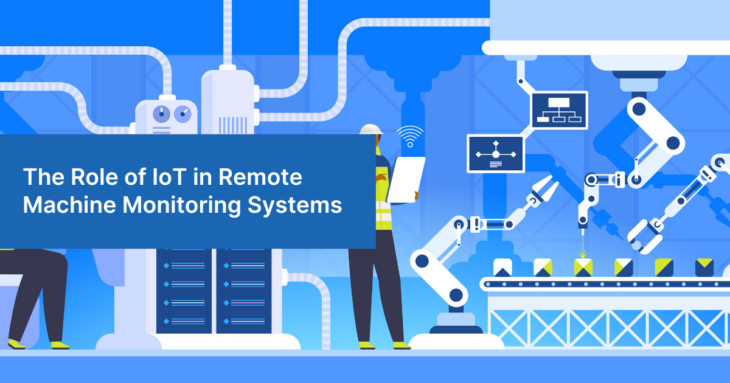The Role of IoT in Remote Machine Monitoring Systems
- Home
- Blog Details

- October 25 2024
- systemadmin
Remote monitoring has transformed the manufacturing industry, bringing new levels of process control. This transformation has been driven mainly by what came to be known as the Internet of Things (IoT). IoT enables manufacturers to get real-time information that can help them adjust operations to overcome potential issues and problems. All of this is done remotely with the decision-maker absent from the scene of operation of the manufacturing process. In this article, we’ll examine how IoT remote machine monitoring is used in the manufacturing industry.
Table of Contents
ToggleCore Components of IoT in Manufacturing
How IoT is Used In Manufacturing
When it comes down to the applications of IoT to the shop floor, there are numerous ways in which it is useful. In this section, we take a look at how it’s used in manufacturing:
1. Predictive Maintenance
Predictive maintenance is all about staying ahead of problems. Manufacturers can spot issues by closely monitoring equipment in real time before they become expensive failures. A simple example is catching an unusual vibration or a temperature spike in the chuck of a lathe machine. These are often signs that something has come loose or might be starting to fail. This information lets you fix the problem early and avoid unexpected downtime.
2. Quality Control
Quality is another area where IoT sensors play a crucial role in maintaining consistency during manufacturing. Quality control systems might use radiation, sound, and vision-based inspection systems to measure material properties, dimensions, surface defects, or temperature. The data helps to strictly adhere to quality standards set by the manufacturer. If a sensor detects any deviations from the norm, real-time data alerts operators to potential defects.
3. Asset Tracking and Management
IoT simplifies asset tracking and management by providing real-time updates on tools, materials, and finished products. With RFID tags, manufacturers can closely monitor every asset throughout the production process and on the factory floor. Machine vision systems can also extend this capability from the factory floor to the whole supply chain. Manufacturers can optimize stock levels and reduce waste by integrating IoT into inventory management. Automated tracking further helps prevent overstocking and stockout problems.
4. Energy management
IoT plays an important role in monitoring energy consumption across manufacturing plants. By continuously monitoring energy use through smart meters and sensors, manufacturers can gain detailed insights into where and how energy is being consumed. The sensors can be used to monitor individual machine energy consumption and energy spent on human activities as well. When coupled with a feedback system, it can also optimize on and off times to save energy to the full extent.

IoT for Data-Driven Decision Making
IoT data is the most valuable output which can be used in real time or for long-term analytics. Here’s how it works:
1. Real-Time Analytics
IoT data enables real-time analytics, which gives instant insights that help manufacturers make quick decisions. Continuous data collection from sensors allows you to spot issues and adjust operations immediately. This means you can tackle problems before they escalate and keep everything running smoothly.
2. Visualization and Dashboard
Visualization tools and dashboards make IoT data easy to understand for anyone. The interfaces, often customized to the manufacturer by the IoT platform, turn raw data into clear, actionable visuals, graphs, charts, and maps. The shows what’s happening across the plant in real time. For plant managers, dashboards are crucial as they provide a quick view of the operations, highlight key metrics, and alert them to any issues.
3. Machine learning and AI Integration
Beyond real-time analytics, platforms also offer machine learning capabilities that turn long-term data into useful information to predict trends, spot patterns, predict failures, and optimize operations. Using Ai gives manufacturers critical insight they never had earlier.
Closing Thoughts
IoT remote machine monitoring is already unlocking value to manufacturers at an unprecedented level. In fact, McKinsey estimates the global value of IoT to be $12.5 trillion by 2030. This means going forward more manufacturers will adopt the technology to gain a competitive edge in the market. If you are in the manufacturing sector you must know how you can improve your operations using IoT.
MachineCONNECT is an advanced machine monitoring system designed for manufacturers to act as a command center for process control. Contact our team today to learn how your factory can benefit from IoT and significantly improve its operations. Click here to request a demo!
